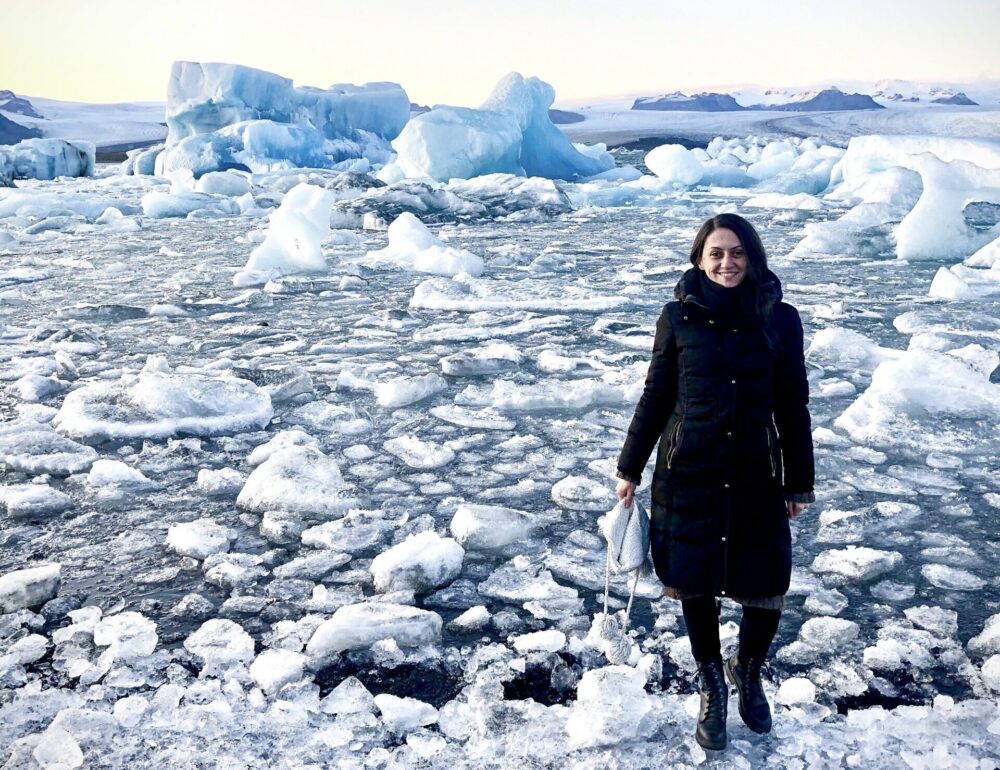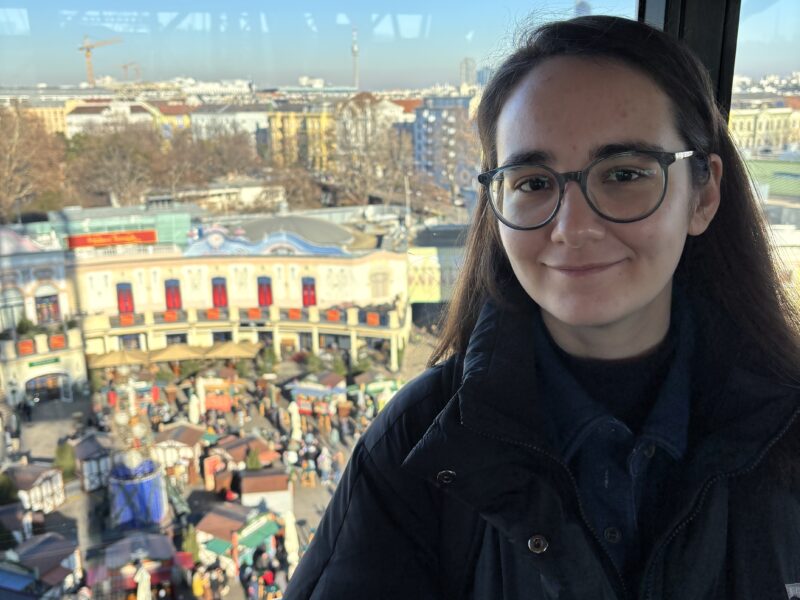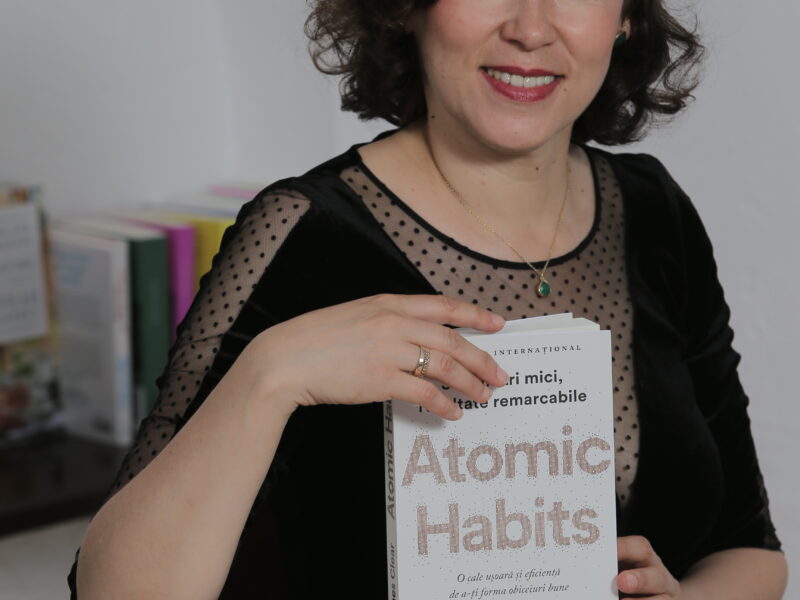Andreea Niță is a translator from Finnish and English and works as a copy editor at Humanitas Publishing House. She graduated from the Faculty of Political Science at the University of Bucharest and worked in the media, the Romanian Cultural Institute and the Finnish Embassy in Bucharest before joining Humanitas. She is passionate about Scandinavian culture, especially Finland. Among the Finnish authors she has translated one cand find Mika Waltari, Timo Parvela, Anja Portin and Mauri Kunnas.
You translate, copy edit, proofread, participate in book launches. How does all this fit into your working day and what does it look like?
The truth is that I've often found myself wishing the day was longer than 24 hours or that I could have the same level of energy until late at night. Of course, I'm privileged because I get to do what I love. But I won't deny that sometimes I have to choose between a night out with friends and the book I'm translating. It's not an easy choice!
My working day starts somewhere around nine o'clock in the morning with publishing chores. I'm lucky that my home office is next to a big window, surrounded by a huge lime tree. And from my office at the Press House, there's a good-sized green space. Being able to look at a corner of nature when I'm copy editing or translating really relaxes me.
I finish my work sometime after midnight. As I'm a rather nocturnal person, I prefer to translate in the evening or at night - which annoys my cat, Ursu, who is just then starting his training in speed-running and jumping over obstacles. And, naturally, he'd prefer me to join in instead of sitting quietly at my desk, staring at sheets of paper that he can't understand why he can't rip with his fangs.
You've been working at Humanitas for some time. How did you get here?
I've been working at Humanitas Publishing House since the beginning of 2015. Before that, I worked for a long time in the press, at the Romanian Cultural Institute and at the Finnish Embassy in Bucharest. I had already started translating and collaborating with publishers and other cultural institutions on publishing projects for several years. Gradually, I realised that this is what I’ve always wanted to do. So, I started looking into where I could turn a hobby into a full-fledged job.
When a job opened up at Humanitas Publishing, I went for an interview, took a test and that's how my story in the Humanitas family began. I'm not exaggerating if I say it's one of the best things that has ever happened to me and I'm deeply grateful to those who gave me this opportunity. The truly wonderful part about this job is that you can never say you have nothing left to learn. With each book, you discover more and more and you realize that you can never say you're blah and that nothing can surprise you anymore. It's a continuous process of learning and self-exploration.
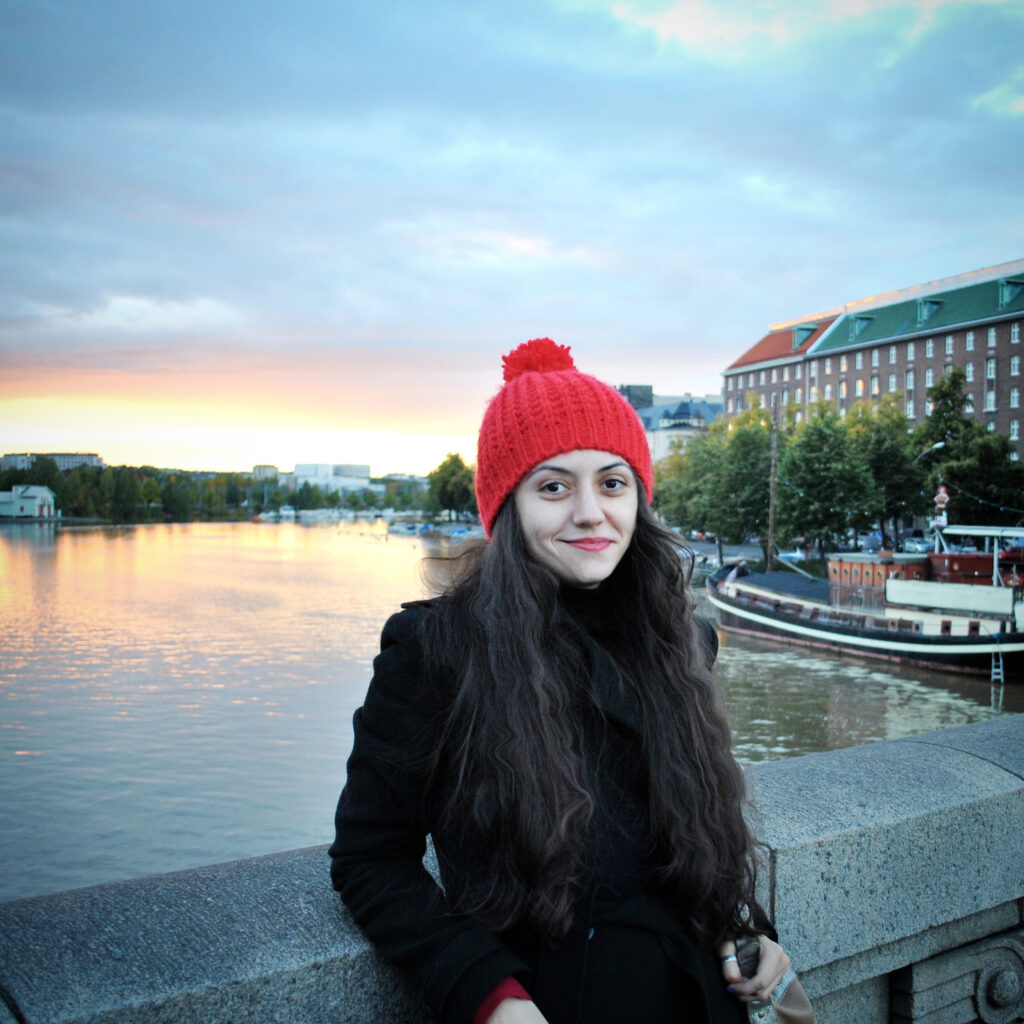
You translate from English and Finnish. How did you manage to learn Finnish?
My first encounter with the Finnish language was in 2009 in Helsinki. I then took Finnish courses in Bucharest and Helsinki. But Finnish, perhaps more than other languages, is best learned by speaking it. Being such a different language from the Indo-European languages, you need a lot of practice, if not constant practice, to be able to speak fluently and to strengthen your vocabulary. And in this respect, my time in Finland and constant conversations with my Finnish friends have served me extremely well. In addition to that, I read the Finnish press and new books every day and travel to Finland as often as I can.
Since my first visit, I have felt at home in Finland. Finnish culture was somehow familiar to me from the very beginning. It was as if I had found something that had always been inside me. That's why I’ve never felt like I was making an effort to learn a difficult foreign language, but rather that I was finding a strangely familiar path to a second home.
Following the example of its neighbours in Norway and Sweden, Finnish literature is making increasingly visible efforts to enter the "world literature" circuit. The presence of Finnish translators is quite low, especially in the Eastern European cultural area, but in Romania they can probably be counted on one hand. Is there any institutional support for the promotion of Finnish literature?
There are very few Finnish translators in Romania indeed. This is certainly also a consequence of the fact that Finnish is only studied at the University of Cluj. I am sure there are many young people who would enjoy learning this language if it were more accessible in the Romanian education system.
The Embassy of Finland in Bucharest supports the promotion of Finnish culture in our country. For example, in 2015, the first launch event of Mika Waltari's The Roman was organised with the help of the Embassy. The Embassy has also supported the participation of young Finnish authors in literary events and book fairs in Romania and follows closely every new translation of Finnish literature.
In addition, of course, there are FILI 's grants to translators and publishers, as well as FILI fellowships, from which several Romanian translators have already benefited.
Among the authors translated from Finnish are the classic Mika Waltari and the increasingly famous Mauri Kunnas. How did their books end up on your desk?
Every translated book is a joy. I feel a deep sense of gratitude for every book I have the chance to translate into Romanian. Mika Waltari is a dream come true. I have read his books translated by Teodor Palic with great pleasure. As for Mauri Kunnas - sure, a children's book is in many ways different from a novel, but it requires almost as much effort, at least creatively. A children's book has to be perfect from cover to cover. I had fun translating Mauri Kunnas' books, I laughed at almost every page, but I can't help but admit that it wasn't easy. I get even more satisfaction, however, when I hear my friends' children telling me about them and asking me when the next one is coming.
So, I can only thank the publishers who had the confidence to hand me all these beautiful and valuable books.
Humanitas Junior recently published the first two volumes of an illustrated series for teenagers - Kepler62 by Timo Parvela, Bjørn Sortland (illustrations by Pasi Pitkänen) - and the novel Radio Popov and the Forgotten Children by Anja Portin (illustrations by Milla Vestin), all translated by you from Finnish. How did your meeting with these books go?
Both the Kepler62and Radio Popov and the Forgotten Children are extraordinarily engaging and well-written books, in a simple but thoughtful style, and have a special charm. Radio Popov is a volume of a sensitivity rarely seen nowadays. Without being essentially a sad novel, it is so moving that at the end I admit it brought me to tears. Kepler62 , on the other hand, is from a different register - it's a dystopia in the style of the already well-known The Last of Us. It's so interesting that you can't put it down, you feel like you're watching a movie, and the illustrations really enhance that feeling. Although Countdown, the second volume of the six-volume series, has only just been released, I'm already translating the fourth, as I'm eager to find out what happens next.
Although they are children's books, both are ideal for adults. I couldn't say they were easy to translate, but the joy I feel when I’m translating a book I love overshadows any effort that the translation process itself might entail.
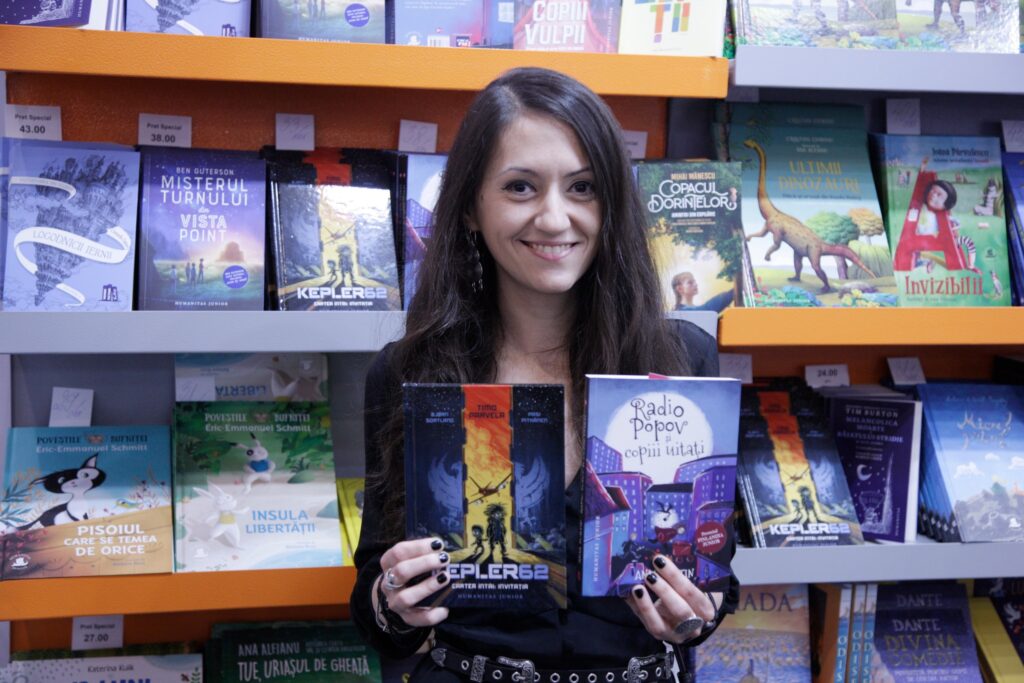
Timo Parvela is a living classic of Finnish children's literature, and Anja Portin is also increasingly prolific and acclaimed, having won the Finlandia Junior Prize for Radio Popov Radio Popov. What was it like working on their texts? How did you get into the world of their books, were there episodes or phrases that were harder to translate?
As far as the Kepler62is concerned, the main challenge for me is to accurately render the seemingly simple style with a strong visual impact of the original. I want the Romanian reader to see the adventures of Ari, Joni and their friends in front of their eyes, as in a movie. I strive to make sure that this highly significant feature is also reflected in my translation.
Anja Portin, on the other hand, has created a deeply lyrical novel with many moving scenes. Although it lacks the long, convoluted sentences that are difficult to translate, it has many puns and unexpected joins of terms. For this reason, it's the first book I've read cover to cover before I start translating (I don't usually do that), to make sure I understand its style and can render it exactly, adapting it as much as the Romanian language requires, and no more. It's quite a demanding book for translators, but extraordinarily beautiful, and reminded me of childhood stories.
Do you have any translation taboos or rituals?
The one taboo I can't give up is convincing my cat to sit on my lap when I'm working, and not on the laptop keyboard, where he has made a ritual of lounging.
All three books published by Humanitas Junior, the first two volumes of the Kepler62 and Radio Popov and the Forgotten Children, were copy edited by Iustina Croitoru. How did the translator-copy editor collaboration go?
Iustina is one of the best, most experienced and professional editors in Romania. It is a privilege to have worked with her. Absolutely all her suggestions have been to the benefit of the text. I can only hope that she also enjoyed copy editing my text :).
You are in turn a copy editor, working both on books in translation and on volumes belonging to Romanian authors, thus collaborating directly with them. Do the two activities differ? What feedback have the Romanian authors you have worked with so far given to your suggestions on the text?
I wouldn't say there is a fundamental difference between being a copy editor and being a translator. Rather, there is an essential similarity: that both must have a perfect command of Romanian. A copy editor/translator's job is to take a text and bring it into its best and most natural Romanian version, and to do so without radically transforming the author's style. It's a much more difficult job than it seems at first sight.
When dealing with translations, what needs to come out of your translation/copy editing work is a text that will sound like it had been written in Romanian. When dealing with a text written by a Romanian author, it is the editor's job to make the necessary and essential proposals to adjust any shortcomings and to present the work to the public in the most readable, coherent and correct form possible.
Over the years, at Humanitas Publishing House, I have worked with both translations and many Romanian authors. I should mention that I work with non-fiction texts, so my suggestions are more related to stylization and proofreading. I am happy to say that absolutely all my collaborations with Romanian authors have been pleasant and fruitful. Of course, sometimes there have been small differences of opinion, but I have had the privilege of working with people who are extremely well trained, professional and open to cooperation, and the results have, I believe, always lived up to readers' expectations. Or at least, so far, I have not received any complaints to the editorial office :)
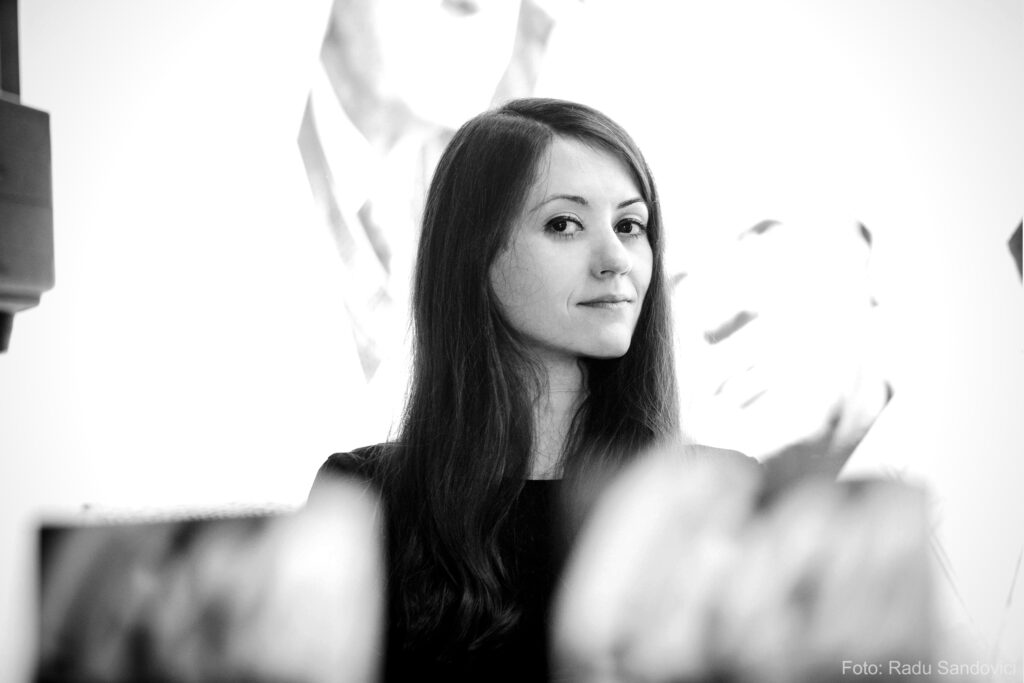
Do you have any "effervescent" memories related to any collaboration with Romanian authors whose texts you copy edited?
I don't necessarily have an effervescent memory. Each collaboration was an experience in itself and with each one I had the opportunity to (re)discover both authors and special people. Many of them I became friends with.
What is the most rewarding part of your experience in the book industry so far?
What I aimed when I decided I wanted to work in publishing was to know that I was leaving something behind. Something that has cultural significance, that will help someone think for themselves, that will make someone happy, that will broaden their horizons. That's my main satisfaction: the fact that I can contribute to a greater or lesser extent to something as valuable as a book.
In addition, there is the joy of learning something new every day and working with accomplished professionals, whom I admire and from whom I constantly learn a lot.
[[The photos are part of Andrea Niță's archive.] [Translated into English by Oana Dragomir.]]

